A Coast Guard HC-144 fixed wing Ocean Sentry sits on the tarmac at Air Station Cape Cod, Mass., Aug. 8, 2021.
Providing up-to-date information, news and original content on American Military issues.
A Coast Guard HC-144 fixed wing Ocean Sentry sits on the tarmac at Air Station Cape Cod, Mass., Aug. 8, 2021.
Mara Karlin, performing the duties of deputy undersecretary of defense for policy, spoke today at a virtual Middle East Institute Defense Leadership Series event.
"This means that we want to think about how to maintain our status in the Middle East,as a partner of choice by supporting our regional partners and affirming our shared interests to counter common threats," Karlin said.
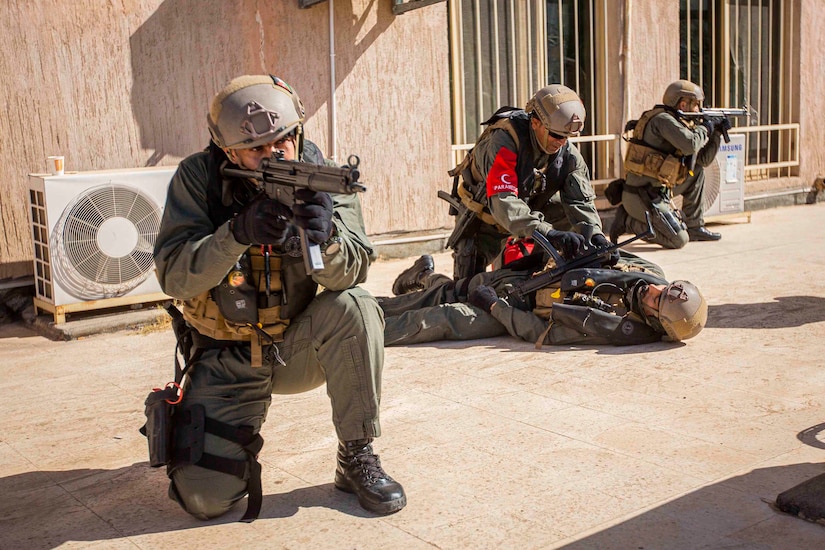
The U.S. military is a global power with global reach, she said.
As a recent example, consider the evacuation of 124,000 Afghans in just a few weeks: That was "just extraordinary," she said.
Although the U.S. military might not have as many boots on the ground as it once did in the region, it can still project sustainable power through dynamic force deployment using its carrier strike groups, over-the-horizon capabilities and coordination with allies and partners in anti-terrorism efforts and deterring bad behavior by Iran, she said.
On working together with partners, Karlin provided some examples.
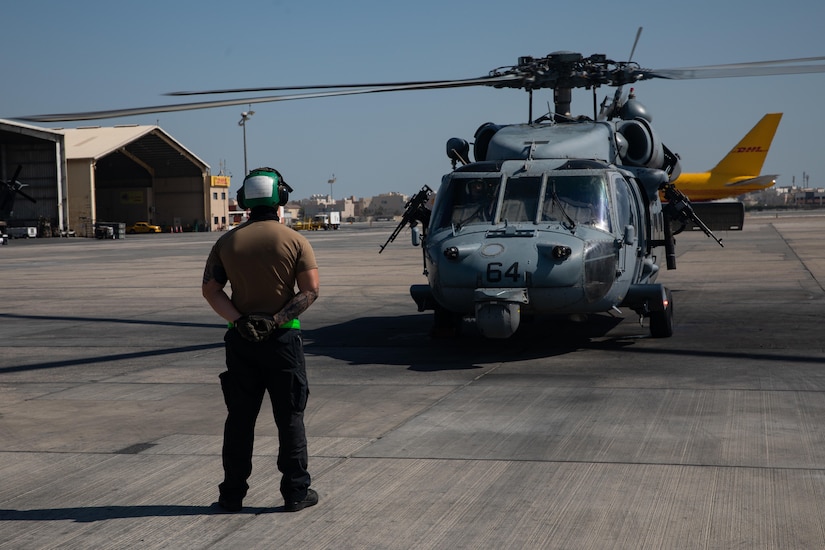
The U.S. is working with Gulf partner nations to develop integrated air and missile defense systems to defend against ballistic missile threats, she said.
The Abraham Accords between the U.S., Israel, Bahrain and the United Arab Emirates, agreed upon last year, are also likely to foster greater regional security cooperation, she said.
Jordan has also played a key role in counterterrorism efforts in the region, and its counterterrorism forces have helped to train other regional partners, Karlin said.
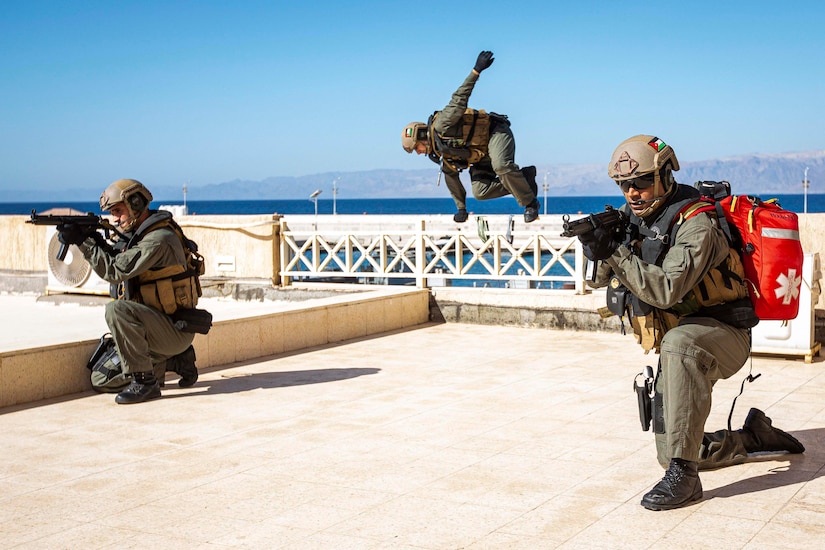
Iraqi security forces, including the Kurdish Peshmerga, have also been especially helpful in the fight against terrorism, and the U.S. has continued helping to professionalize their military forces and assisted in increasing their military capacity and capability, she said.
The United Kingdom, France and other NATO allies have also been particularly helpful in providing military support to partners in the region, as well, she added.
Marine Corps recruits put a tactical remote sensor system in place during low-light conditions training at Marine Corps Air Ground Combat Center Twentynine Palms, Calif., Sept. 9, 2021.
Oct. 6, 2021
SECRETARY OF DEFENSE LLOYD J. AUSTIN III: Well, Minister Błaszczak, it is a pleasure to welcome you to the Pentagon.
TRANSLATOR: (UNTRANSLATED)
SEC. AUSTIN: Our countries share a special bond --
MINISTER OF NATIONAL DEFENCE OF THE REPUBLIC OF POLAND MARIUSZ BŁASZCZAK: I understand. Secretary Austin, I understand. Thank you very much for -- for translation. I understand, sir.
SEC. AUSTIN: Okay. Your -- your English is very, very strong, sir.
(Laughter.)
Our countries share a special bond that stretches back to America's founding era when Polish heroes helped lead the Continental Army to victory. We fought side by side with Polish soldiers in Iraq and Afghanistan. I have personally fought side by side with your soldiers and I'll always remember their courage and their professionalism.
Our ties have deepened through 20 years of shared sacrifice and the United States of America will be forever grateful.
Now, when Poland joined NATO in 1999, you affirmed your deep commitment to the mutual security of our Alliance. In 2014, as the security environment in Europe became more uncertain, the United States began deploying rotational combat forces across NATO's eastern flank, the majority of which operated in Poland and continue to do so to this day.
In the last year, our countries signed an Enhanced Defense Cooperation Agreement providing even greater support to U.S. personnel serving in Poland. It's a great example of your commitment to shared responsibility, and we're excited to build upon this important relationship which is rooted in our shared values and shared history.
Our two countries are committed more than ever to NATO's collective security and regional stability, especially along NATO's eastern flank. We will continue to work together to enhance NATO's defense and deterrence capabilities and to ensure that the transatlantic bond remains strong.
And so, Mr. Minister, thank you again for being here. And I look forward to our discussions.
MIN. BŁASZCZAK: Thank you very much, Secretary Austin. It's my pleasure to be in Washington again to discuss with you, Mr. Secretary, the ever-stronger Polish-American defense cooperation which is instrumental in meeting a number of common security challenges.
A durable and robust U.S. engagement in Europe, and particularly on NATO's eastern flank, is fundamental for the cohesion of the Alliance, effective deterrence and stability of the whole Euro-Atlantic area. By the same token, the U.S. military presence in Poland continues to be a central pillar of our current and future bilateral cooperation and of our common response to the security challenges to NATO. Let me express here my deep satisfaction with the progress achieved so far in bolstering our defense ties.
I would like to highlight the ongoing smooth implementation of the Enhanced Defense Cooperation Agreement and of its related arrangements, which constitutes the basis for the increased U.S. military presence on the territory of Poland. I also welcome the activation of the V Corps Headquarters Poland and the appointment of the General Joks, who is here with me today, as its deputy commander.
We are also continuing vigorous efforts to enhance our defense capabilities by acquiring state-of-the-art U.S.-made military equipment including the F-35 aircraft, Abrams tanks, HIMARS and Patriot system, to name but a few of the most prominent examples.
Mr. Secretary, I am looking forward to discussing with you how we can further enhance our already strong defense cooperation. Thank you.
Army Capt. Brandon Schoor, part of the medical response team deployed to Knoxville, Tenn., retrieves medicine for a patient at the University of Tennessee Medical Center in Knoxville, Sept. 27, 2021. Northern Command through Army North remains committed to providing flexible Defense Department support to the whole-of-government COVID-19 response.
An Idaho Army National Guardsman performs COVID-19 testing collections at a medical facility in Boise, Idaho, Oct. 1, 2021, as part of Joint Task Force - Idaho's COVID-19 relief effort in Idaho. The task force consists of both guardsmen and active duty military personnel who reported to hospitals, clinics and other medical facilities across the state, Sept. 7, in support of overwhelmed medical staff during this second wave of the COVID-19 pandemic.
Oct. 6, 2021 | BY Jim Garamone , DOD News
The Navy Band played the spritely airs of the Polish national anthem — a mazurka — as Secretary of Defense Lloyd J. Austin III welcomed Polish Defense Minister Mariusz Blaszczak to the Pentagon for meetings today.
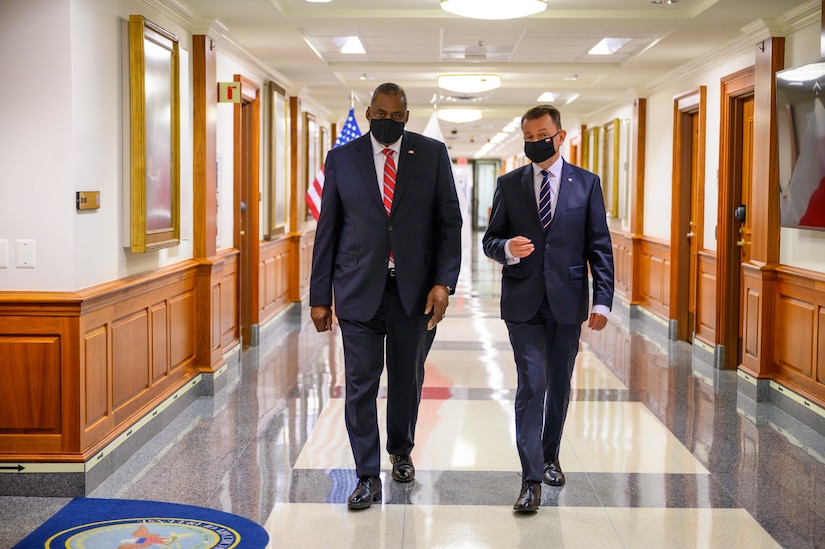
In addition, the United States is building an Aegis-ashore facility in Poland as part of the NATO Ballistic Missile Defense capability.
U.S.-Polish friendship goes back to the Revolutionary War. Tadeusz Kosciuszko joined the nascent U.S. Army and served as an engineer to George Washington. He left the service as a brigadier general.
This friendship extends to today. Austin noted that he fought alongside Polish service members in Afghanistan and Iraq and praised their courage and professionalism in battle.
In 2014, as the security environment in Europe became more uncertain, the United States began deploying rotational combat forces across NATO's Eastern flank, "the majority of which operated in Poland and continue to do so to this day," he said. "Last year, our countries signed an Enhanced Defense Cooperation Agreement, providing even greater support to U.S. personnel serving in Poland. It's a great example of your commitment to shared responsibility."
Austin wants to build on the progress already made. "Our two countries are committed more than ever to NATO's collective security and regional stability, especially along NATO's Eastern flank," he said. "We will continue to work together to enhance NATO's defense and deterrence capabilities and to ensure that the trans-Atlantic bond remains strong."
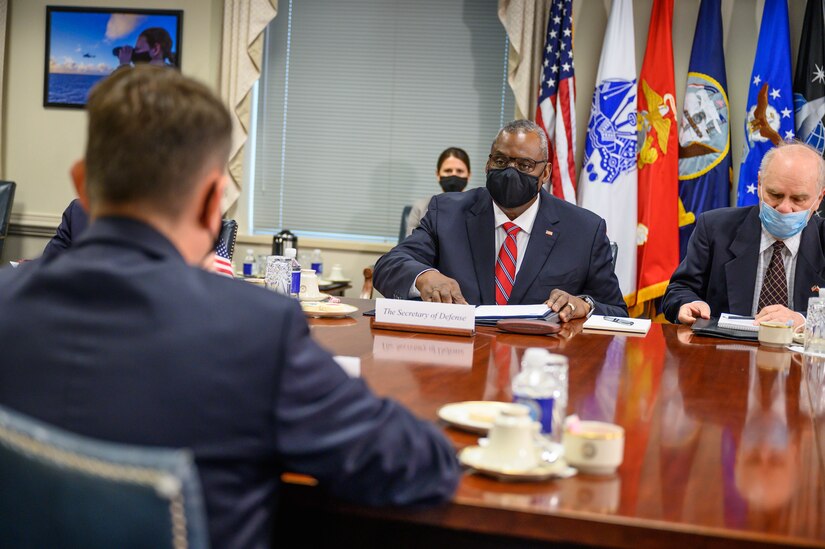
Oct. 6, 2021 | BY C. Todd Lopez , DOD News
This spring, the Defense Department spelled out a strategy for cloud computing outside the continental United States, or OCONUS, including ways to better support service members at the tactical edge.
During a virtual discussion today with GovernmentCIO, Danielle Metz, the deputy chief information officer for information enterprise outlined the three goals that define the strategy.
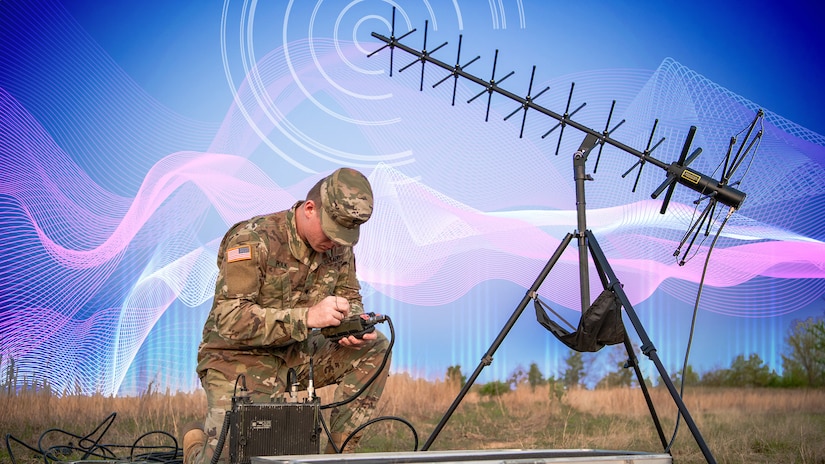
The first of those goals is to provide robust and resilient connectivity all the way to the tactical edge, Metz said. Right now, network connectivity where warfighters operate can be spotty — and that's a problem when it comes to connecting to the cloud and getting warfighters the information they need to carry out their missions.
"[It] really impacts the ability for [the] cloud to work," she said. "You have to have a network that is resilient and capable to be able [to] operate in a distributed environment."
In the OCONUS Cloud Strategy, the department lays out several objectives to achieve robust and resilient connectivity, including modernization of in-theater communications infrastructure, leveraging of state-of-the-art technology that can operate in denied, degraded, intermittent or limited environments, and enabling access to critical information from a variety of devices — not just laptops or desktop machines.
A second goal is to provide computing power that enables forces at the tactical edge — which means putting processing power overseas, as close to the warfighter as possible.

"Right now the way that we have things structured is that we're doing a lot of backhauling from those OCONUS locations back to the United States," she said.
The kind of information the warfighter needs to make decisions puts a lot of strain on the network, Metz said. And the long-haul for that data — from the warfighter back to the U.S. and then back to the warfighter again — can introduce a lot of latency in that data that can adversely affect decision-making.
"It is creating significant delays and increasing the [likelihood] of putting our people and our allies in harm's way," she said.
Either mobile or regional data centers located overseas can help with that, Metz said. The DOD's strategy recommends enterprise management of OCONUS cloud computing capability in order to let critical data be processed as close to the warfighter as possible.
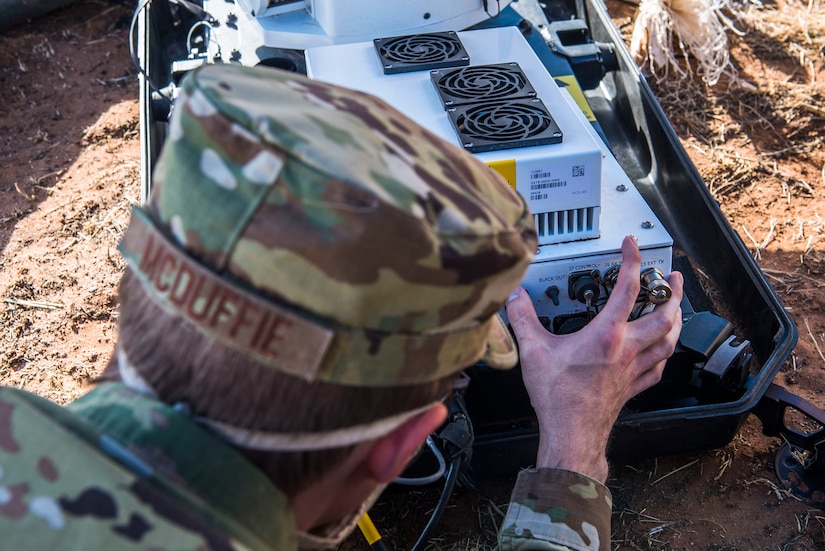
Finally, Metz said, it's critical that warfighters be proficient with what the department builds. They must be educated on how to use the systems they are provided — and DOD must ensure they are trained.
"We need to cultivate the talent and ensure that we have a continual cultivation as we rotate service members from those locations serving at the edge," she said. "We recognize if we're able to fix problem 1 and problem 2, but we don't address problem 3, everything is for naught. It really has to be a symbiotic relationship in terms of ensuring that we have the right infrastructure in place, that we have the computing edge pushed to where the warfighter is, and then the third piece is ensuring that once we have all those things, the warfighter and the people who are actually at the edge know how to use it, and they can use it well and it's seamless for them."
All three goals can be achieved, Metz said, but some will take much longer than others — and accomplishing all three will require more than just the efforts of the Defense Department.
"It's a whole-of-government approach in terms of working with members of Congress, with other federal partners, internal to DOD, also with our cloud service providers and developing a cohesive strategy that works for the department to be able to deliver these much needed services, to where they are needed," she said.
Navy Seaman Ana Serrano-Pomales paints a bulkhead aboard the USS Iwo Jima in the Atlantic Ocean, Oct. 1, 2021.
Oct. 6, 2021
Secretary of Defense Lloyd J. Austin III announced today that the president has made the following nomination:
Navy Rear Adm. (lower half) Paul J. Schlise for appointment to the rank of rear admiral. Schlise is currently serving as director, Surface Warfare Division, N96, Office of the Chief of Naval Operations, Washington, D.C.
Marine Corps Cpl. Thomas Rexrode launches an RQ-20B Puma small unmanned aircraft system from a boat at Marine Corps Base Camp Pendleton, Calif., Sept. 30, 2021.
An Air Force F-15C Eagle pulls away from two F-15E Strike Eagles during Battle of Britain Day over Royal Air Force Lakenheath, United Kingdom, Sept. 24, 2021.
Marine Corps Cpl. Emory Warrik fast-ropes from a UH-1Y Huey helicopter in Peru, Sept. 26, 2021, during UNITAS, the world's longest-running annual multinational maritime exercise.
PITTSBURGH - A resident of Brownsville, Pennsylvania, has been indicted by a federal grand jury in Pittsburgh on a charge of Possession of Material Depicting the Sexual Exploitation of a Minor, Acting United States Attorney Stephen R. Kaufman announced today.
The one-count Indictment, returned on September 28, 2021 and unsealed today, named Karl D. Lutes, age 50, as the sole defendant.
According to the Indictment, on February 11, 2020, Lutes possessed videos and still images in computer graphics files depicting minors, some of whom had not yet attained the age of 12 years, engaging in sexually explicit conduct.
The law provides for a maximum total sentence of 10 years in prison, a fine of $250,000, or both. Under the Federal Sentencing Guidelines, the actual sentence imposed would be based upon the seriousness of the offense and the prior criminal history, if any, of the defendant.
Assistant United States Attorney Carolyn J. Bloch is prosecuting this case on behalf of the government.
Homeland Security Investigations conducted the investigation leading to the Indictment in this case.
An indictment is an accusation. A defendant is presumed innocent unless and until proven guilty.
This case was brought as part of Project Safe Childhood, a nationwide initiative launched in May 2006 by the Department of Justice to combat the growing epidemic of child sexual exploitation and abuse. Led by the United States Attorneys' Offices and the Criminal Division's Child Exploitation and Obscenity Section, Project Safe Childhood marshals federal, state, and local resources to locate, apprehend, and prosecute individuals, who sexually exploit children, and to identify and rescue victims. For more information about Project Safe Childhood, please visit www.justice.gov/psc.
He was born in Sicily and came to the United States when he was 11. In Niagara Falls, New York, he didn't care much for school but became an avid reader.
Joe Bongiovanni read a lot about history and World War II. He became fascinated with the Marines in the Pacific. He would stay up late so he could watch the scenes of the Iwo Jima flag raising as the television networks signed off for the night.
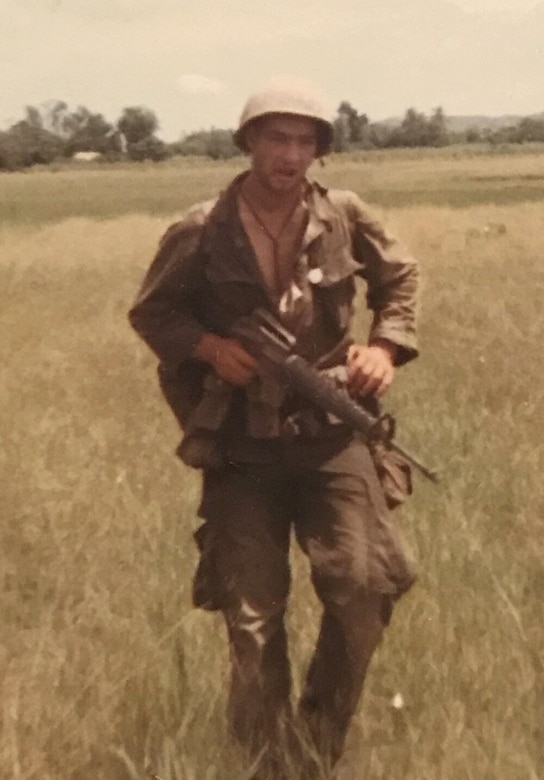
"I wanted to become a Marine from a very young age," Bongiovanni said.
He joined the Marines Feb. 9, 1967, in Niagara Falls as the Vietnam War raged. Bongiovanni spent 12 and a half months with the infantry in Vietnam from 1967-68. He wouldn't become a naturalized U.S. citizen until 1975.
"Well it was a lot of excitement, a lot of anxiety," he said of his war experience. "A lot of combat. [I] saw a lot of our brothers getting killed and wounded."
Bongiovanni, who moved from Madison, Alabama, to Arley, Alaabama, in 2016, has traveled the world since then without meeting people from his hometown Niagara Falls. But curiously he encountered four people from there while he was in Vietnam. On the very first day he arrived, he saw a guy reading the Niagara Falls Gazette newspaper. Bongiovanni had gone to school with him.
"What are the odds of that happening?" Bongiovanni mused.
He arrived in Vietnam in late August 1967 and left Sept. 9, 1968. He served in the 1st Platoon of Bravo Company, 1st Battalion, 3rd Marines, 3rd Marine Division. They were called a special landing force, a special reaction force. When other units got into a tough spot, Bravo Company would be alerted and would get inserted mostly by helicopter and a few times by landing craft. With their operations based in Quang Tri, they were on the move up north in the I Corps. They were right on the North Vietnam border and were constantly receiving incoming rockets and mortars.
"We were called grunts. We were the ground pounders," Bongiovanni said.
The elements were harsh. There was stifling heat. There were viruses and other diseases. There were insect bites. Jungle rot would infect your feet. The temperature would drop considerably at night and it would get cold. In the monsoon season, it would rain constantly. "But your body becomes acclimated to it," Bongiovanni said.
"It could be quiet. Then all of a sudden, all hell would break loose," he said.
His unit was involved in major engagements like the Tet Offensive in January 1968 and the Battle of Dai Do, that April 30 to May 3, when it took heavy casualties.
"You remember the guys you were close with," Bongiovanni said. "You remember the hardships and you learn to appreciate life. I was 19 years old. You learn to appreciate the little things.
"Sometimes I think about it and I shudder. About all the times I came close to dying. And you think why did I make it and so many didn't and sacrificed their [lives]."
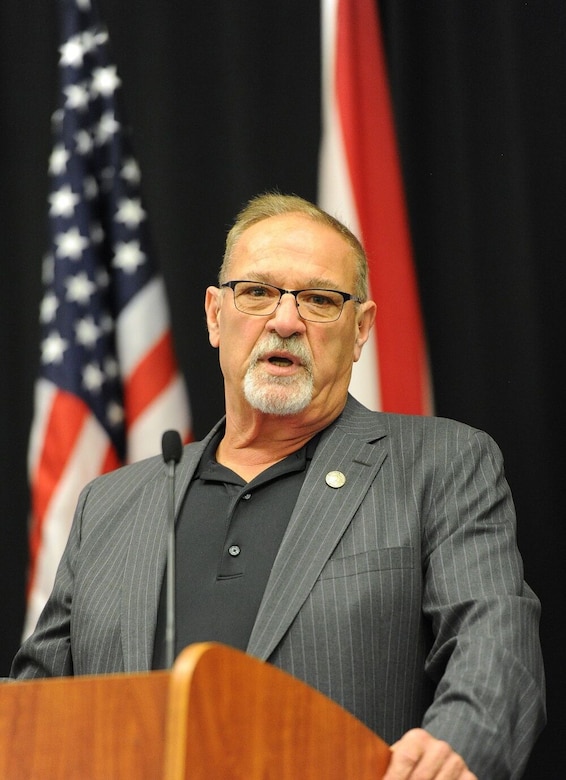
Bongiovanni, who received the Combat Action Ribbon, left the Marines as a corporal in 1970. He lived in Madison from 2000 to2016 and was instrumental in starting Heroes Week in 2007 with the Semper Fi Community Task Force.
At 72, he resides on Smith Lake in Arley with his wife of 40 years, Denice. They have two sons — Christopher, of Madison, and Jon, of Jasper, Alabama — and a granddaughter. Bongiovanni is a managing partner of Scott Crump Toyota in Jasper where Jon is the manager of the sales department.
He enjoys fishing, going out on his pontoon boat and he's learning to play the guitar. He belongs to the Marine Corps League, the 3rd Marine Division Association, the Veterans of Foreign Wars and the American Legion.
Bongiovanni shared his thoughts on this nation's commemoration of 50 years since the Vietnam War.
"I think it's wonderful," he said. "And I think it's a long time coming."
(Skip Vaughn is an editor at the Redstone Rocket at Redstone Arsenal in Alabama.)
U.S., British and Japanese Navy ships conduct multiple carrier strike group operations in the Philippine Sea, Oct. 3, 2021.
Oct. 6, 2021
The United States reached the debt limit at the end of July. Since then, the U.S. Treasury has been taking extraordinary measures to prevent the United States from defaulting on its obligations.
If the United States defaults, it would undermine the economic strength on which our national security rests.
It would also seriously harm our service members and their families because, as Secretary, I would have no authority or ability to ensure that our service members, civilians, or contractors would be paid in full or on time.
Here are some other potential impacts:
Our service members and Department of Defense civilians live up to their commitments. My hope is that, as a nation, we will come together to ensure we meet our obligations to them, without delay or disruption.
Marines conduct a live-fire assault during a training exercise at Marine Corps Air Ground Combat Center Twentynine Palms, Calif., Sept. 28, 2021.
Air Force Capt. Heather Prentice prepares to release a lantern during the Air Force Families Forever Fallen Hero Sky Lantern Lighting on the beach in Biloxi, Miss., Sept. 24, 2021.
The guided missile destroyer USS Stockdale conducts an archipelagic sea lane passage through the San Bernardino Strait, crossing from the South China Sea into the Philippine Sea, Sept. 27, 2021.
Navy Petty Officer 2nd Class Gia Woodcox moves mail aboard the aircraft carrier USS Ronald Reagan during a replenishment-at-sea in the Philippine Sea, Sept. 30, 2021.